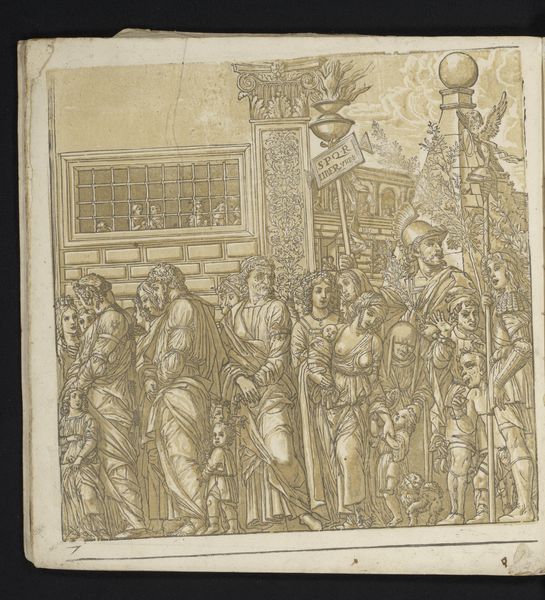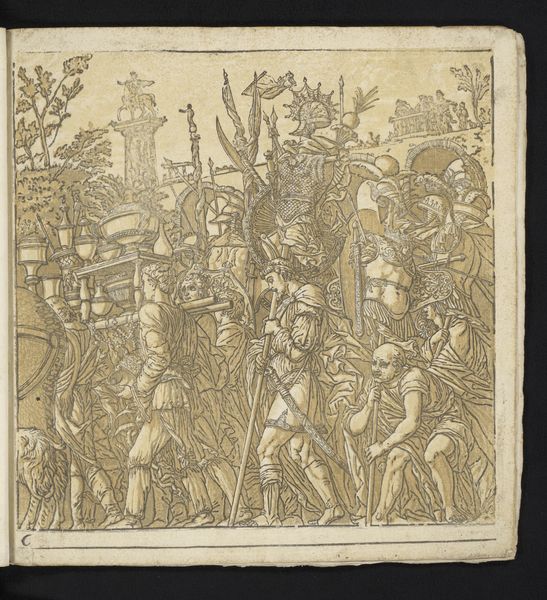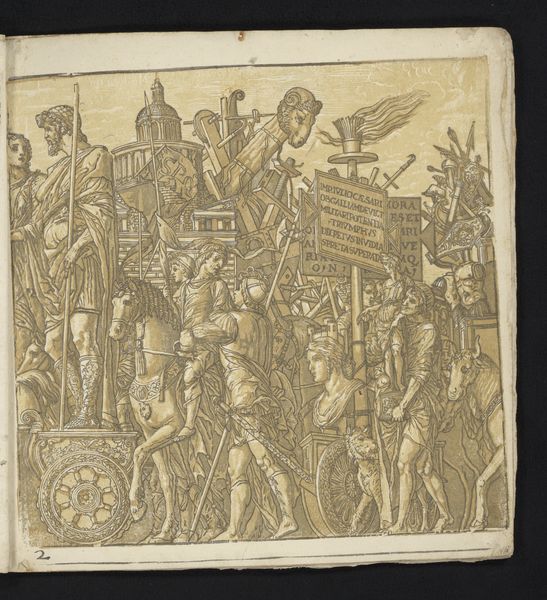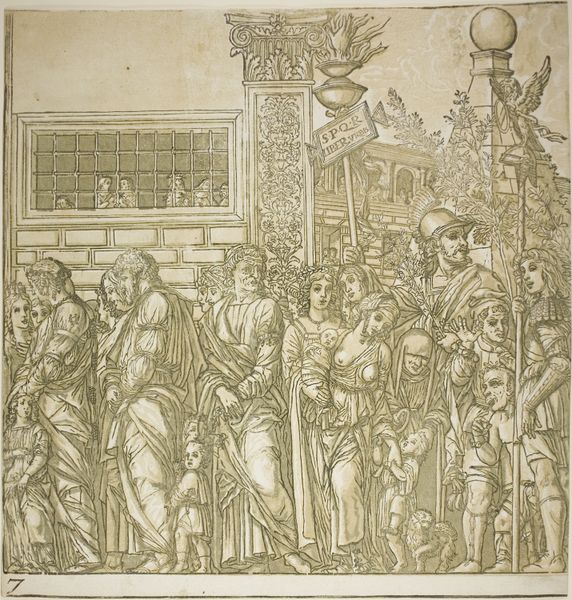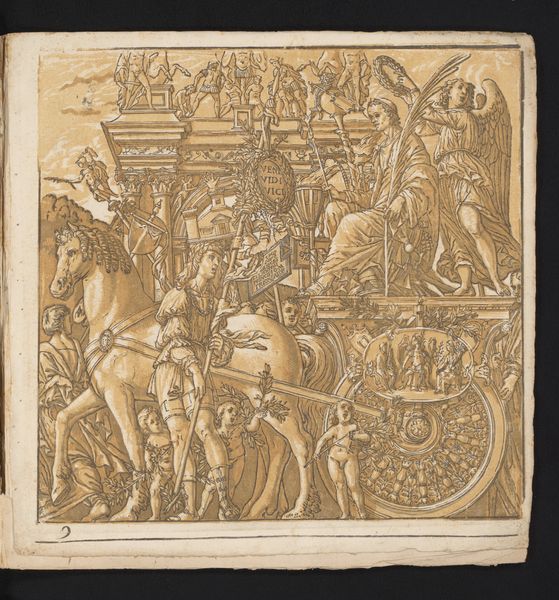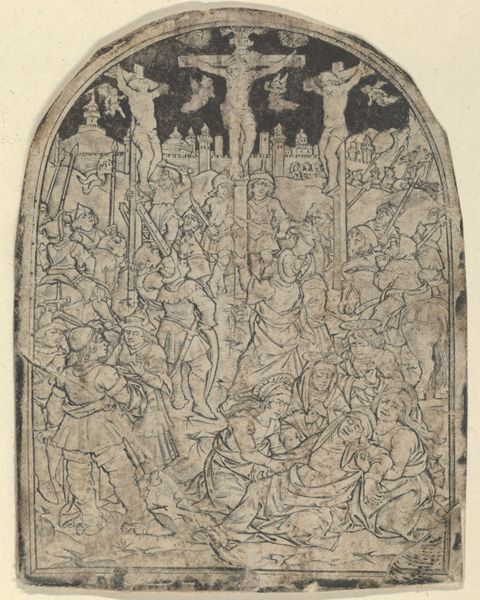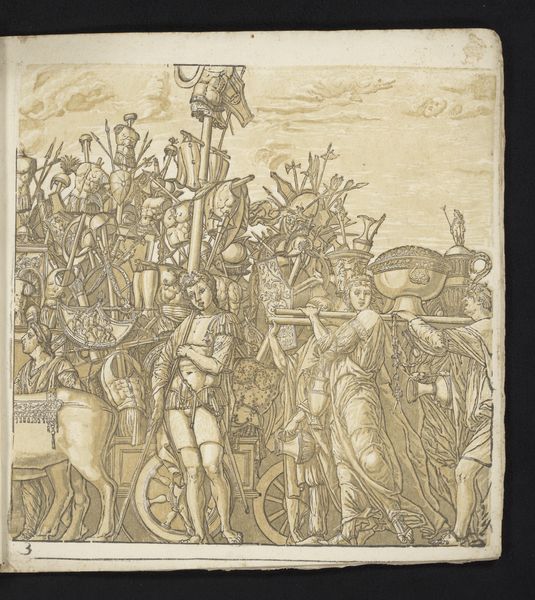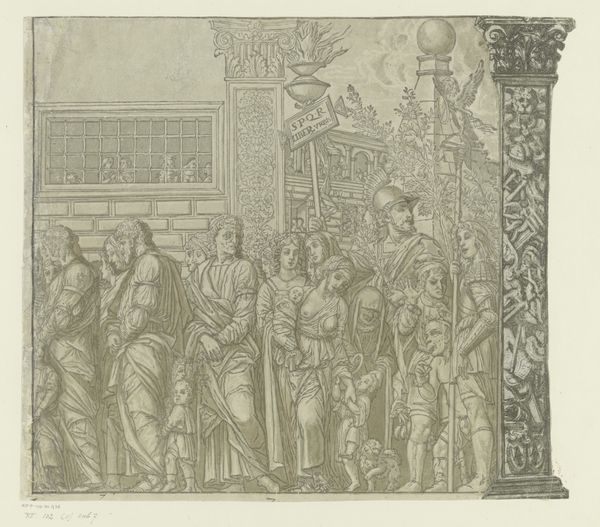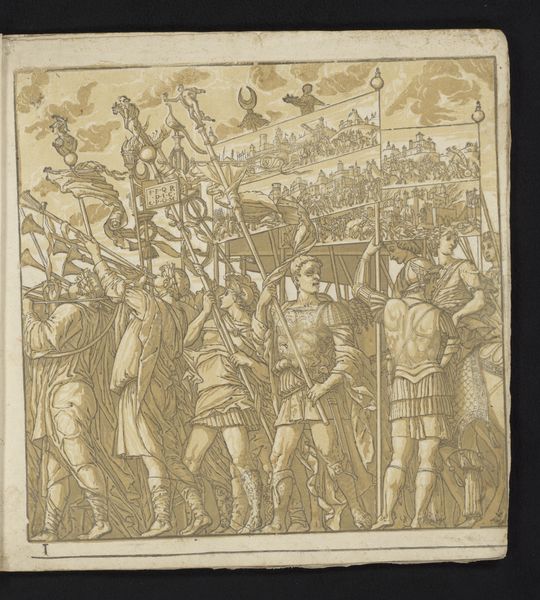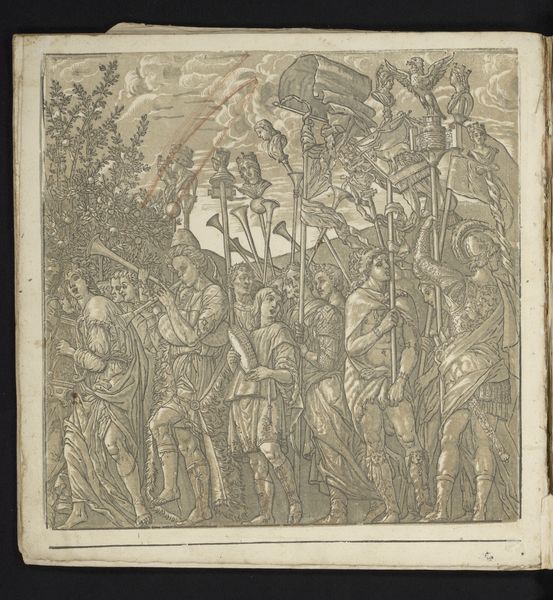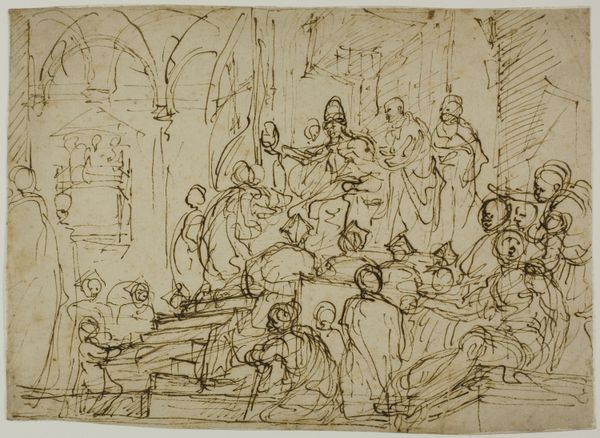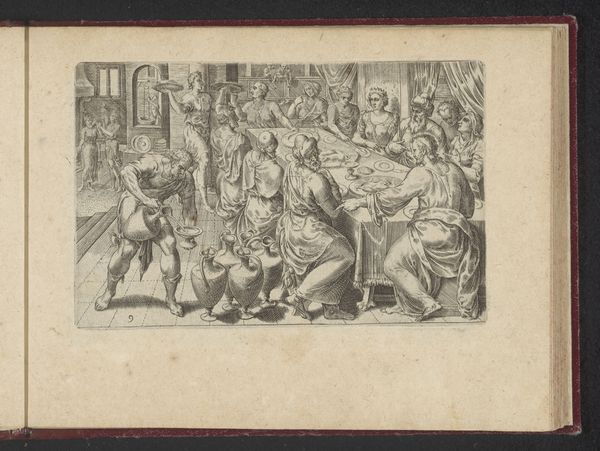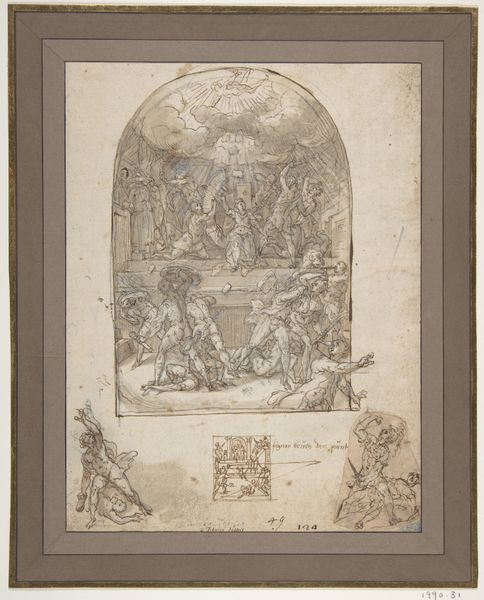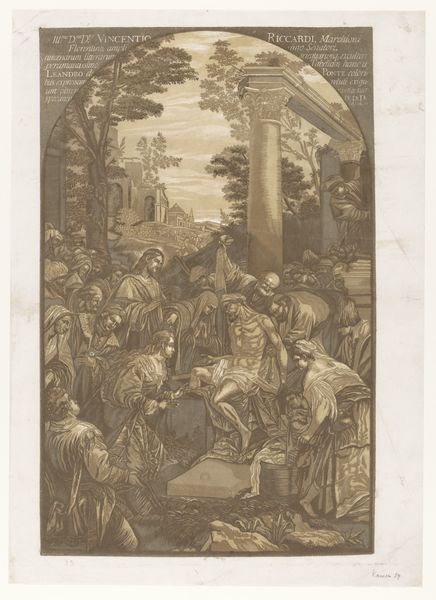
drawing, print, engraving
#
drawing
#
aged paper
#
toned paper
# print
#
sketch book
#
mannerism
#
figuration
#
personal sketchbook
#
pen-ink sketch
#
pen and pencil
#
line
#
pen work
#
sketchbook drawing
#
history-painting
#
storyboard and sketchbook work
#
sketchbook art
#
engraving
Dimensions: height 415 mm, width 400 mm
Copyright: Rijks Museum: Open Domain
Andrea Andreani made this chiaroscuro woodcut, "The Triumph of Julius Caesar," in Italy, sometime around the late 16th or early 17th century. The image shows a procession, presumably celebrating a military victory, entering a city. It's interesting to think about why someone in Andreani's time would choose to depict this subject. Italy was not a unified nation at this time, but a collection of city-states, constantly at war with each other. Perhaps the artist was looking back to the Roman Empire as a kind of golden age, a time when Italy was united and powerful. The print is also an excellent example of the kind of technical skill that artists were developing at this time. Andreani used multiple woodblocks to create a sense of depth and shadow, which can be appreciated more fully by consulting resources on printmaking techniques of the period. Art like this is rarely just about aesthetics, but reflects the politics and society that produced it.
Comments
No comments
Be the first to comment and join the conversation on the ultimate creative platform.
